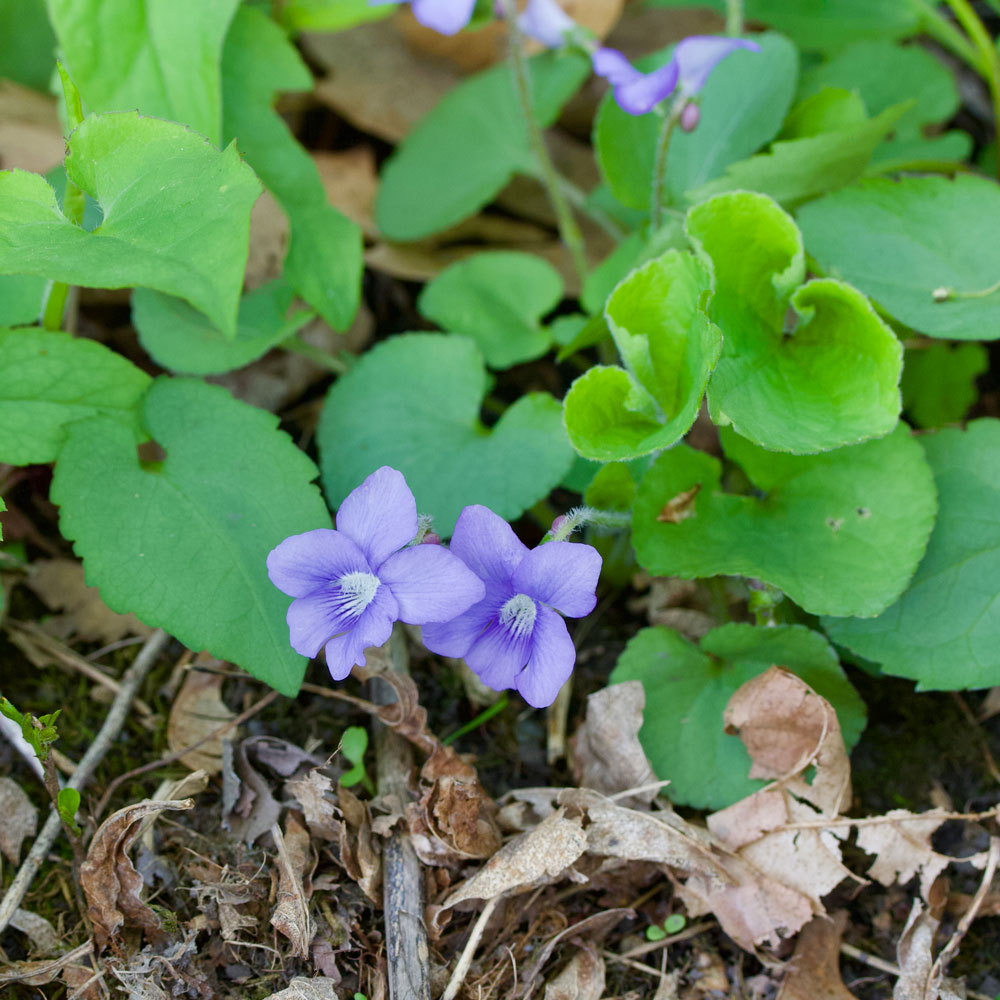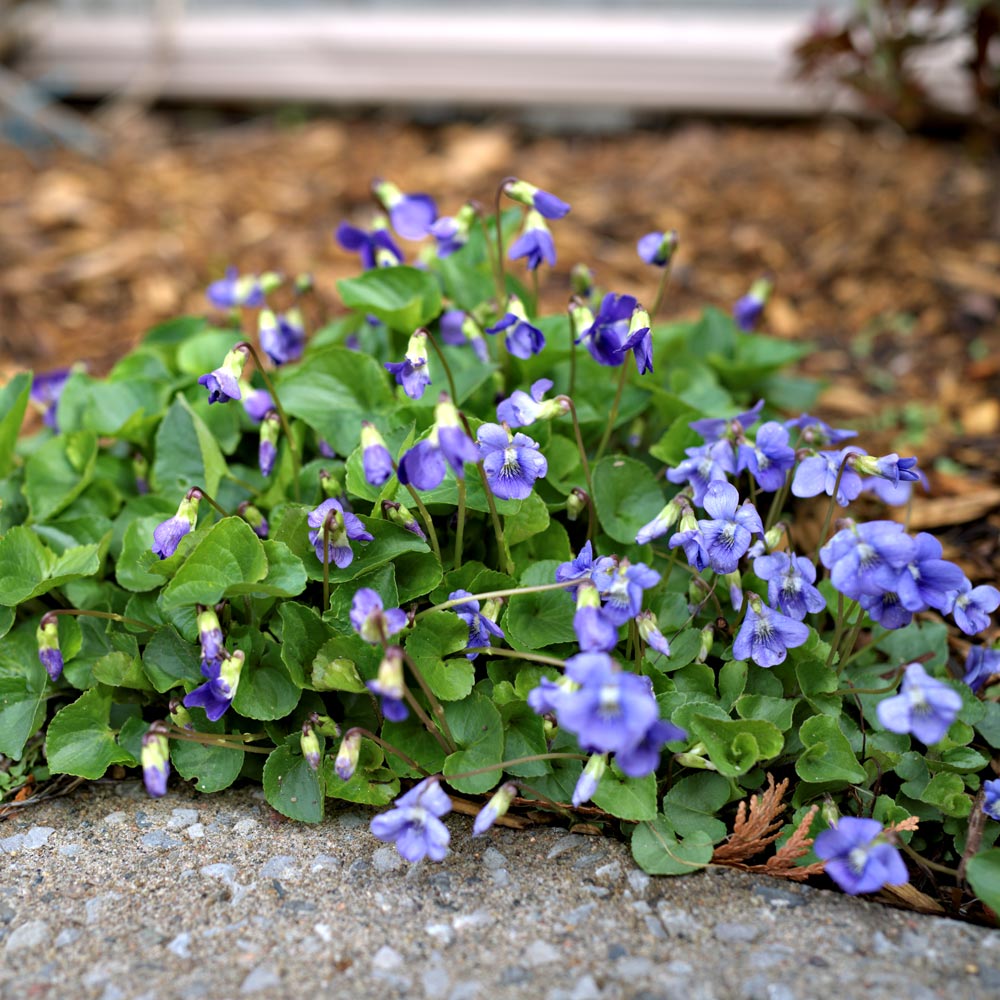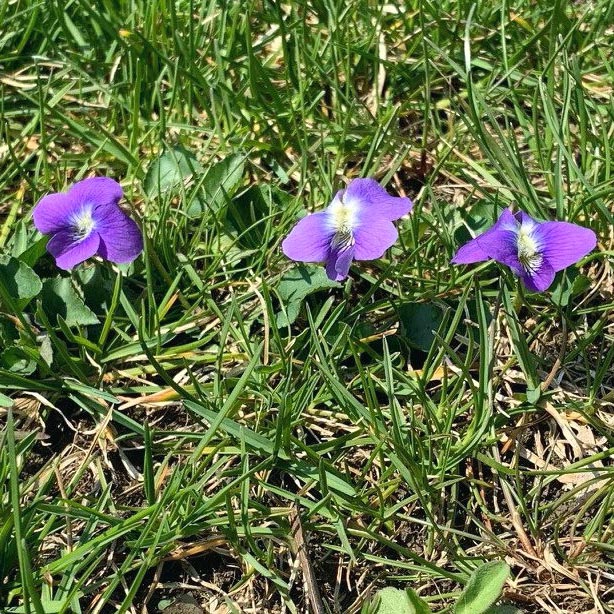White Clover: A Common Weed That Outcompetes Lawns
White clover survives mowing by growing just lower than turfgrass. Learn how to keep white clover weeds out of your garden and landscape.
Weed or native wildflower? That’s the first question to decide if you see your yard colored in mid-spring with short, glossy-leafed plants blooming purple-blue.
This common sight throughout the central and eastern United States and into Canada is typically the result of wild violets – also sometimes known as "blue violets," "meadow violets," or "wood violets."
Wild violets (Viola sororia) are free-seeders that can quickly colonize all sorts of settings.
Some people welcome that because wild violets are native plants that are attractive to a variety of native pollinators and wildlife.
Several species of fritillary butterflies use them as a host plant and at least three kinds of native bees – the mining bee, sweat bee, and mason bee – take advantage of the early-season nectar source. Wild turkeys, doves, and rabbits are among the birds and small mammals that eat the plant's seeds.
Wild violets are beloved enough by some that they are the official state flower of Illinois, Rhode Island, New Jersey, and Wisconsin.
Native Americans used the petals as a remedy for cough and sore throats.
However, the easy-spread, easy-grow habit of wild violets also causes them to pop up in garden beds and home lawns – to the dismay of gardeners trying to earmark the space to other plants.

Viola sororia. Common blue violets are distinctive for their heart-shaped leaves and purple-blue flowers. CynthiaShirk / iStock / Getty Images Plus
Wild violets are most distinctive for their small (less than inch-wide), five-petaled, purple-blue flowers that hang atop wiry, leafless stems from April into June. But the other key identifier is the leaves. Those are green, heart-shaped, and somewhat glossy.
Wild violet plants grow four to eight inches tall. They get started in a new area by introduced seed, but once a plant or two is in place, they can spread exponentially from one year to the next.
Violets colonize via a root system of short, thick, horizontal rhizomes and by seeds. The spring flowers of wild violets produce some seeds. A second set of closed, self pollinating flowers develop in summer, forming seed capsules that eject seeds up to eight to nine feet away from the base of existing plants in summer.
The fur of mammals, the "droppings" of birds, ants, and the soles of human shoes are other ways violet seed spreads.
Wild violets are cold-hardy perennials into far-north USDA Hardiness Zone 3a. Foliage typically is intact and still green heading into winter, although the leaves break down as winter progresses before growing new foliage the following spring.
This is a versatile plant, too. Although wild violets grow best in cool and somewhat shaded spots such as damp forest edges, they’re durable enough to thrive in meadows, dry roadsides, and sunny home lawns. They also tolerate clay soil and aren’t usually browsed by deer.
Our native wild violets have a few look-alikes. Sweet violets (Viola odorata) are native to Europe and known for their fragrance. They widely naturalized in the U.S., and often cross-pollinate with the native violet. They spread primarily by stolons or runners. Johnny jump-ups with their tri-colored purple, yellow, and white flowers, and field violets, are winter-sprouting annuals that bloom white to pale-purple with patches of yellow.

Common blue violet in garden bed. Elmar Langle / iStock / Getty Images Plus
If you like the looks and merits of wild violets, there’s no need to do anything. You’ll likely get regular and increasing numbers of flowers each spring with zero effort.
That means they easily spread in unwanted areas as well. If you’re trying to keep violets from overly dominating a lawn or trying to get rid of them altogether, you have two main options.
One is to dig them by hand. Smaller outbreaks can be controlled with the aid of a sharp weeding tool or even an old screwdriver.
It’s important to loosen the soil and remove the entire plant, including the fleshy root system, since new shoots can emerge from short rhizome pieces left behind.
Foliage can go in the compost bin if you’ve removed plants before they've gone to seed.
The second option is to spray individual plants with an herbicide, although it's important to note that violet leaves have a thick waxy coating which makes them harder to kill. In garden beds, post-emergent herbicides containing triclopyr have been shown to be effective in killing violet plants, roots and all (as well as most other green plants). In lawns, triclopyr and several other broad-leaf blends are available to kill violets without harming grass.
Preen One Lawncare controls 265 lawn weeds – including wild violets – and it fertilizes for eight weeks as well.

These young wild violets are starting a new colony in a thin home lawn. Image courtesy George Weigel
Your best defense against wild violets in garden beds is to maintain a two- to three-inch layer of mulch over the ground. That layer discourages the sprouting of wild violets as well as most other weeds.
Preen Mulch with Extended Control Weed Preventer provides an additional protection from weeds. This product contains an added weed preventer to prevent over 100 common weeds from germinating for six months. Available for purchase at Lowe’s.
In the lawn, the best violet defense is to encourage thick grass by mowing high, fertilizing regularly, and overseeding the lawn with additional grass seed each fall.